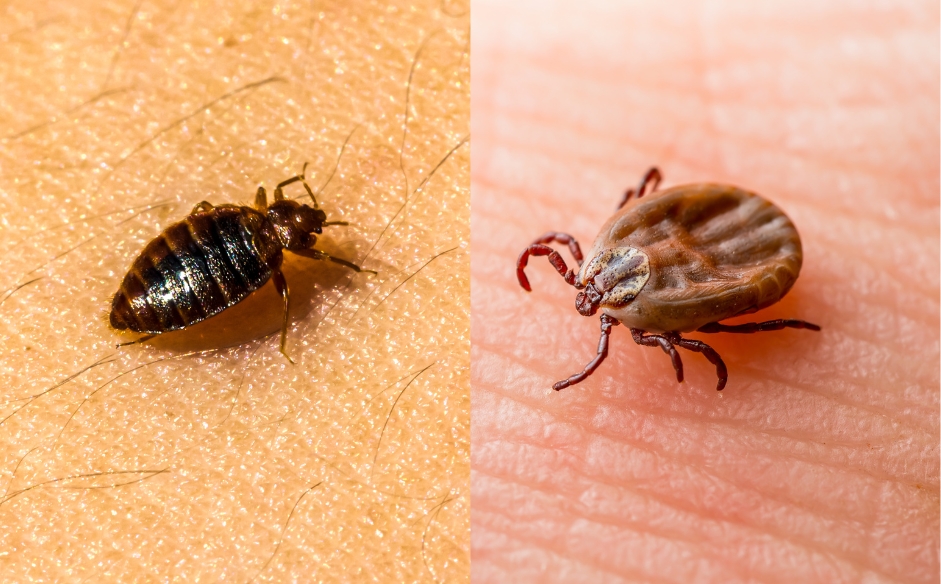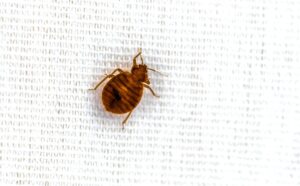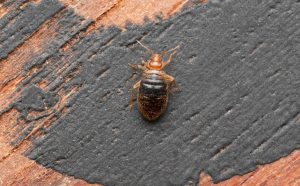When it comes to pests that can invade our homes, two of the most common and dreaded ones are ticks and bed bugs. While these two insects may seem similar at first glance, they actually have many differences in appearance, behaviour, and health risks.
So what exactly sets them apart? Today, we will look at ticks versus bed bugs and explore their key characteristics.
Appearance
Both ticks and bed bugs belong to the arthropod family, but they differ greatly in physical appearance.
Ticks are small (about the size of a sesame seed) and flat-bodied with eight legs. They come in various colours depending on the species, including black, brown, and reddish-brown.
On the other hand, bed bugs are oval-shaped and slightly larger than ticks. They have six legs, a reddish-brown colour, and appear more rounded in shape.
Habitat
Another key difference between ticks and bed bugs is their preferred habitat. Ticks are commonly found outdoors in grassy or wooded areas, where they can easily latch onto passing animals or humans.
Some species of ticks may also thrive indoors if brought inside by pets or on clothing. In contrast, bed bugs are primarily indoor pests that prefer to live close to their food source – human blood. They can be found in cracks and crevices of furniture, walls, mattresses and even electrical outlets.
Feeding Habits
The biggest distinction between ticks and bed bugs is their feeding habits.
Ticks are parasitic creatures that feed on the blood of animals and humans. They use their sharp, straw-like mouthparts to pierce the skin and suck blood for several days, before detaching and dropping off.
In contrast, bed bugs also feed on human blood, but do so in a different way. They use their two elongated beaks to pierce the skin and inject saliva containing anaesthetics and anticoagulants, ensuring the host remains unaware while they feed for approximately 5-10 minutes.
Health Risks
Both ticks and bed bugs pose health risks to humans, but in different ways.
Ticks are known to transmit various diseases, such as Lyme disease, Rocky Mountain spotted fever, and tick-borne encephalitis. These diseases can have serious consequences if left untreated.
Bed bugs, on the other hand, do not carry or transmit diseases directly, but their bites can cause allergic reactions and skin irritations.
Prevention and Control
To prevent a tick or bed bug infestation in your home, it’s important to take proactive measures.
For ticks, this includes avoiding areas with tall grass and wearing protective clothing when outdoors. Inspecting yourself and your pets after spending time outside is also recommended.
To prevent bed bugs, it’s crucial to inspect your hotel room or accommodation when travelling, and wash all clothing in hot water upon returning home. Regular vacuuming and decluttering can also help eliminate potential hiding spots for bed bugs.
In terms of control, ticks can be removed using tweezers to gently pull them out by the head without squeezing their bodies. It’s important to seek medical attention if you experience any symptoms after a tick bite.
For bed bugs, professional pest control services may be necessary to completely eradicate an infestation due to their elusive nature.
Takeaway
Although ticks and bed bugs may share some similarities, they are two distinct pests with different behaviours and effects on human health.
By understanding their differences, we can better protect ourselves from these annoying and potentially harmful invaders in our homes. Stay vigilant and take preventative measures to keep both ticks and bed bugs at bay.
So next time you encounter a small pest in your home, remember it could be a tick or a bed bug, and now you know how to tell them apart!




